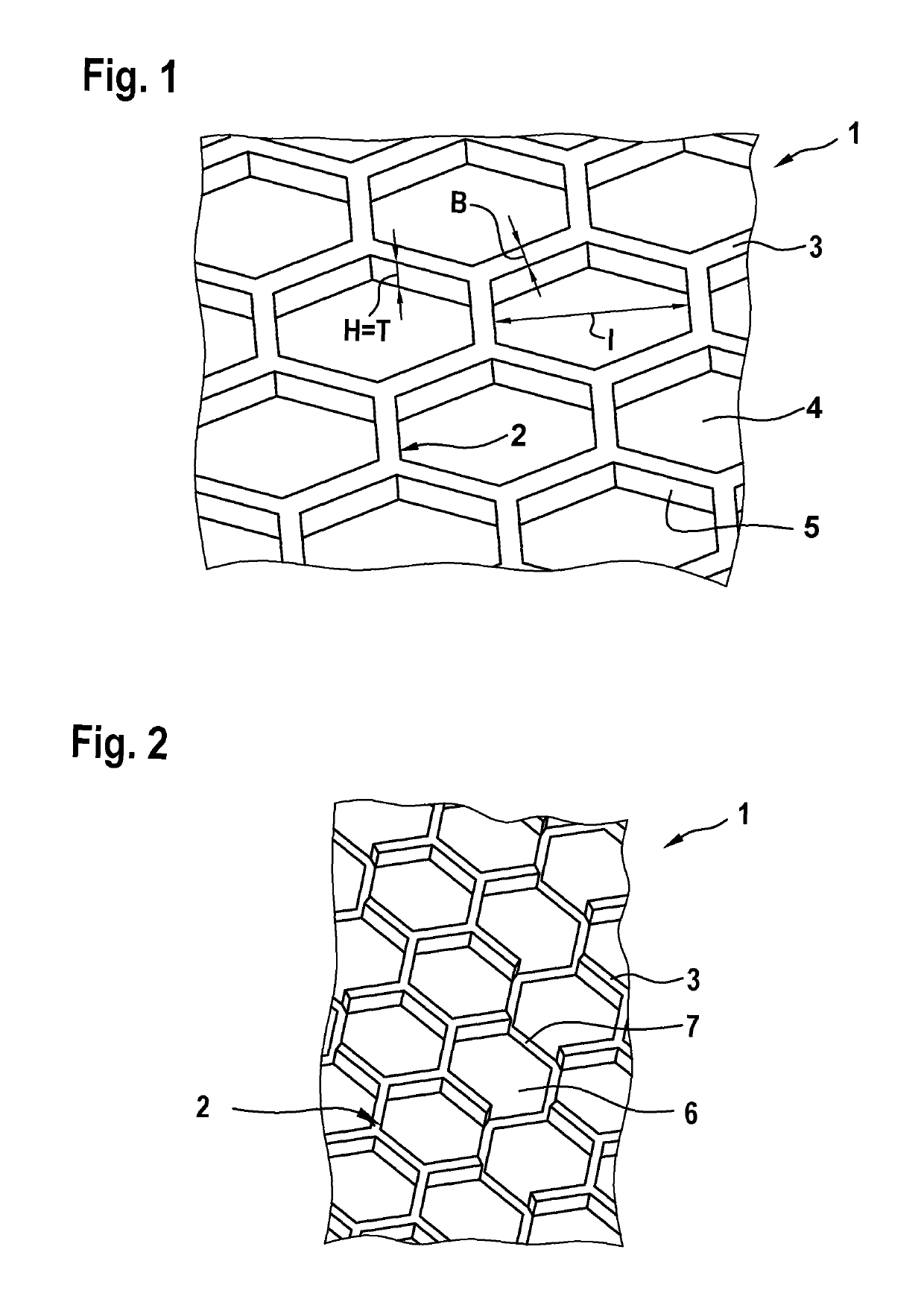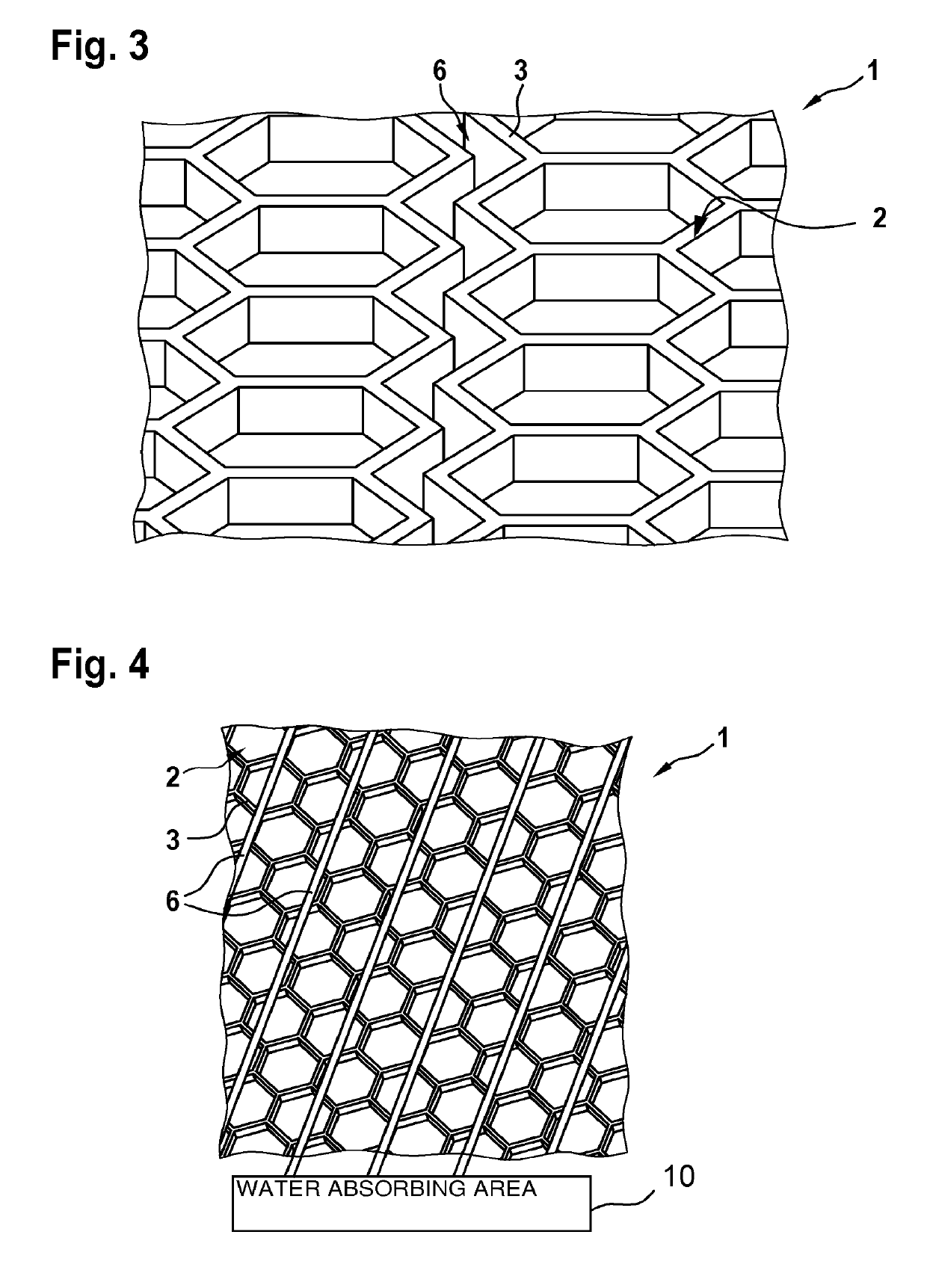Component and optical element with antifogging properties
a technology of optical elements and components, applied in the field of components, can solve the problems of high visual capacity, difficult to detect, and difficult to detect, and achieve the effects of preventing fogging, cost-effectiveness, and impairment of visibility
- Summary
- Abstract
- Description
- Claims
- Application Information
AI Technical Summary
Benefits of technology
Problems solved by technology
Method used
Image
Examples
Embodiment Construction
[0032]Referring to the drawings, FIG. 1 shows a detailed view of the honeycomb structure according to the present invention, which is generally designated by 1.
[0033]The honeycomb structure generally designated 1 has a plurality of honeycombs (honeycomb forms) generally designated 2 that are comprised of webs 3 that separate an interior space / interior area 4 of a honeycomb 2 from an interior space / interior area 4 of another honeycomb 2. FIG. 1 shows hexagonal recesses (interior space / interior area) 4 enclosed by webs 3 that are configured as honeycombs 2. The possible embodiments of the honeycombs are, however, not limited thereto. Rather, the honeycombs 2 may be polygonal, especially rectangular, hexagonal or octagonal. A round shape of the honeycombs as an embodiment variant is also possible. The structure 1 with honeycomb forms 2 can be produced via various manufacturing methods. Processes, which operate mechanically, chemically, by heat or concentrated light action as well as wi...
PUM
| Property | Measurement | Unit |
|---|---|---|
| inner width | aaaaa | aaaaa |
| inner width | aaaaa | aaaaa |
| width | aaaaa | aaaaa |
Abstract
Description
Claims
Application Information
 Login to View More
Login to View More - R&D
- Intellectual Property
- Life Sciences
- Materials
- Tech Scout
- Unparalleled Data Quality
- Higher Quality Content
- 60% Fewer Hallucinations
Browse by: Latest US Patents, China's latest patents, Technical Efficacy Thesaurus, Application Domain, Technology Topic, Popular Technical Reports.
© 2025 PatSnap. All rights reserved.Legal|Privacy policy|Modern Slavery Act Transparency Statement|Sitemap|About US| Contact US: help@patsnap.com


